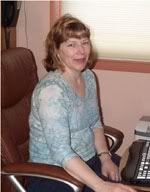What Else Should a Hatha Yoga Teacher Know about Pranayama?
By Paul Jerard
Since Yama literally means “control,” you could say that Pranayama is control of “vital energy.” When teaching Yoga classes, the four stages of Pranayama should be thoroughly explained. If you think in terms of a pendulum, it is much similar to the four stages of Pranayama. The pendulum moves in one direction, pauses, then moves in the opposite direction, and pauses again. This is the same action that occurs in the lungs, when a Yoga student practices Pranayama.
The following are the four stages of Pranayama. Puraka is the inhalation stage. Antar Kumbaka is the pause that happens when we retain the inhalation. Rechaka is the exhalation stage of a breath. Bahir Kumbaka is external breath retention and occurs after the exhalation stage.
Why should we get so technical about Pranayama techniques in the average Yoga class? Many Yoga students will come to your classes for a variety of pain relieving methods, and some Pranayama techniques usually help alleviate pain.
When a person has pain, he or she can think of nothing else. Pain is the companion you wish you never met. Pranayama can help us say goodbye to pain, but it must be performed technically and safely.
Here are some of the many forms of Pranayama a Yoga teacher should know. There are more, but this is a good foundation. It should also be noted that Yoga students are advised to seek guidance from a competent Yoga teacher.
Pranayama methods deserve much more respect and should not be taken lightly. One Pranayama session of 20 minutes, would make any Yoga beginner realize the hard work that goes into this practice. The value of Pranayama, and quality of life it can bring, cannot be overstated.
Ujjayi Pranayama: Also known as victorious breath is often seen in Vinyasa style Hatha Yoga, Power Yoga, and Ashtanga Yoga classes, but can be found in other Yoga styles, as well. This technique allows the Yoga student to concentrate deeper on his or her practice. However, this is also a calming form of Pranayama that can be performed before bedtime, relaxation, or meditation.
The glottis is gently contracted to draw the length of your breath out. Yoga students should seek guidance from a certified Yoga teacher when integrating bandhas with Ujjayi Pranayama.
Natural Breath: This is the breath of a new born baby. It is a full breath in the upper, middle, and lower compartments of the lungs. The stomach, intercostals, and chest should expand equally during an inhale. If a student is naturally short of breath and nervous, he or she may have difficulty learning this technique, even with the guidance of a certified Yoga teacher. However, this same student is relieved to master natural breath, as this Pranayama will also calm those who feel anxiety, nervousness, and hypertension. This Pranayama technique is not a cure for nervousness, but some Yoga students have had amazing relief from natural breath.
Dhirga Pranayama: Is a three part breath, where awareness is developed through all three lung compartments from the bottom up on an inhale and from the top down on an exhale. This is a very common practice within a Hatha Yoga class.
Kapalabhati Pranayama, Sitali Pranayama, and Bhastrika Pranayama are also essential techniques. As stated earlier; there are many more Pranayama techniques that can be taught by Hatha yoga teachers, as quality of life can be rediscovered through their practice.
© Copyright 2006 – Paul Jerard / Aura Publications
Paul Jerard is a co-owner and the director of Yoga teacher training at: Aura Wellness Center, in North Providence, RI. He has been a certified Master Yoga teacher since 1995. To receive a Free e-Book: "Yoga in Practice," and a Free Yoga Newsletter, please visit: http://www.yoga-teacher-training.org/index.html
---------------------------------------------------------------------------------------------------------------------------
FREE articles about self-help, self improvement, wellness, holistic health, and fitness. To see our full line of e-Books visit: www.ebooks4selfhelp.com
---------------------------------------------------------------------------------------------------------------------------
AmbrosiaServices.com
Get a Free Yoga e-Book & Free Report


<< Home